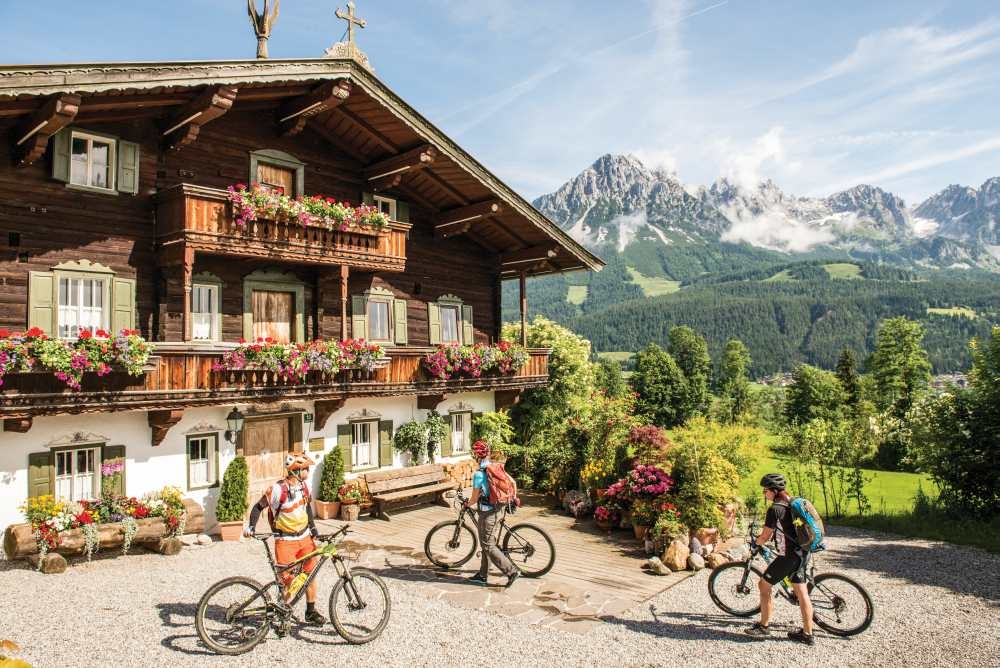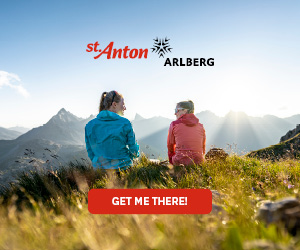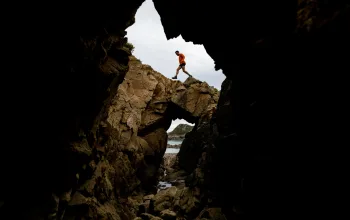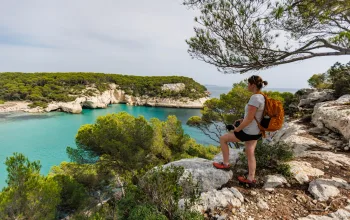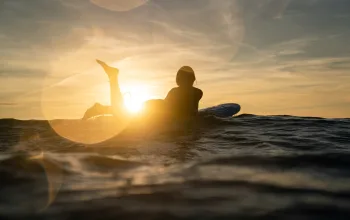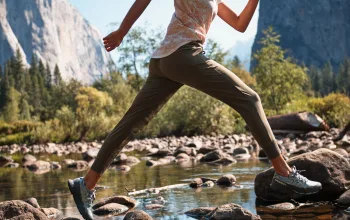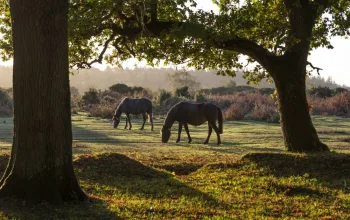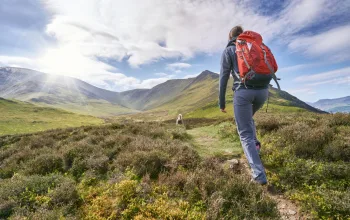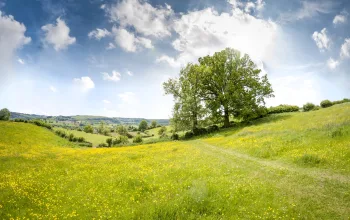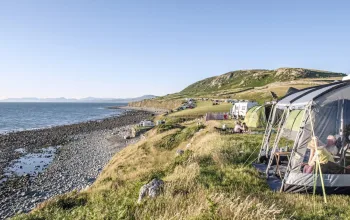The ups and downs of a winter trip to the Austrian Tyrol are pretty well laid out for you; join a queue for a box on a wire, get out at the top, and follow the well-ploughed routes to the bottom. And repeat. Once the snow melts however, the possibilities of vertical travel branch out into an incredible range of adventures.
In the Wilder Kaiser region - just around the corner from Kitzbuhel and home to the towns of Ellmau, Going, Scheffau, and Soll - it is possible to join up to six different mountain activities over the course of 6 days, all guided, and all for the price of €139. If mountain guides were retailers you'd be looking at Cyber Monday, Orange Wednesday and Black Friday, rolled into one and doubled. Unfortunately Cyber-Orange-Black Week isn't a great name, so it's called Alpine Sports Week (ASW).
I arrive at the Vital and Panoramahotel Sonnenhof - a luxury ski hotel in winter, but a treat and a bargain in summer - expecting to find family groups and first-time-adventurers, here for a new experience. But judging my fellow travellers by the outdoor brands they are sporting (which we all do, right?) it seems I'm in the company of fit, enthusiastic mountain-lovers.
I'm wary of anything resembling organised fun or enforced socialising, but at our welcome dinner I slip into easy conversation with Austrian guides, German climbers and a small group of Brits too. The term 'like-minded people' in the ASW blurb raised vague concerns of icebreaker games and trying to come up with three interesting facts about myself, but I needn't have worried. Any organisation is reserved for the activities, and the like-mindedness is very naturally apparent.
The relaxed mood is perhaps a reflection of our surroundings - I've always found the Austrian Alps much gentler than their French cousins, with more rolling foothills and green pastures, and older, authentic architecture, and the Wilder Kaiser is no exception. Onion-domed churches reflect the sunlight in the orange and green shades of their lead tiles, and the eye is encouraged to wander over the alpine meadows and up to the formidable bulk of the jagged ridge from which the area takes its name - the Wilder Kaiser.
I left work clutching my six-day schedule with an unflinching bureaucratic grip, but as soon as I arrive the itinerary became little more than a loose basis for mountain fun. And at €139 it's an itinerary you can afford to cherry pick from.
Single-track mountain biking
Top of my list is the mountain biking. This is where a small town in the alpine foothills comes into its own; a short climb from the village of Going puts us straight onto deserted singletrack, winding through the pine forests for an exhilarating warm-up run. Occasionally we pop out onto one of the meandering roads that access the wooden chalets, windows underlined by flower boxes, and ancient farming tools lined up against the walls, before diving back into the trees.
Going is higher up the valley than the neighbouring town of Scheffau, our first destination, which gives us an unexpected ratio of uphill to downhill. A great start, but when in the Alps, why pedal? The Brandstadl cable car from Scheffau puts us 900 vertical metres above the valley with only two wheels to get us down again.
With 400km of mountain bike trails in the Wilder Kaiser there is terrain enough for any level, and we seem to sample all of it on our descent. Near the top it's hard to avoid the odd dull fire road, which allows vehicle access to the amenities that have sprung up around the lift station.
But the gravel is short-lived and muddy trails beckon from all sides. We very quickly leave all signs of the ski infrastructure behind and plunge into the forest for more twisty single-track which leaves my internal compass reeling; the only way is down. Owing to recent rain, the trails are tacky, the roots treacherous, and the streams are swollen but it doesn't stop us ploughing across them.
There is a benefit to that ski infrastructure that I haven't considered. The mountains around Wilder Kaiser are relatively low - 1650m at the top of Brandstadl - and heavily wooded. While bombing through the forest is near-nirvana for me, it's a shame not to take in an Alpine vista occasionally, so when the trees abruptly give way to wide avenues of piste, it is a delight to be confronted with the soaring Wilder Kaiser peaks, in case you've forgotten this is their territory.
In the South Tyrol - part of Italy since the Great War - the Austrian influence abounds, and I am surprised to see the Italian influence making its way north into the Wilder Kaiser.
This hasn't happened in a hugely pervasive way, but where it counts; Prosecco cocktails and pizza. 'Hugo' on a drinks menu is always a welcome sight - Prosecco, soda, mint and elderflower cordial is the perfect summer refreshment - but the Memory Cafe in the heart of town has taken things further with Prosecco providing the base for myriad flavours including white chocolate, raspberry and rose. The pizzas are also superb, but you don't come to Austria to eat Italian, right?
The Austrians - and their German-dominated visitor demographic - love a buffet. Breakfast, lunch and dinner are often laid out expansively like living menus. Why translate the sight of beautiful food into words, when it can so easily speak for itself? The dominance of meat and carbs speaks volumes about the region's history, and the fact we'd built our appetites through adventure rather than agriculture, did not diminish our return trips to the trestle tables.
The Biker Cafe is a variation on this theme; the focus being entirely on meat and motorbikes. A meagre buffet table of accompaniments serves to emphasise how mouth-wateringly excellent the many varieties of meat are. Having said that, our waitress tops off every dish with a delicate little nasturtium which seems jauntily at odds with the excess flesh on both the plates and the biker-clientele.
The iron way or via ferrata
With stomach and arteries fully lined I'm ready to expend some energy on the Klamml Klettersteig via ferrata - another very welcome Italian export. If you haven't tried via ferrata the Alpine Sports Week is a good opportunity to dip your toe in, with several easy routes in the area. Compared to traditional rock climbing, the speed at which you can access the dizzy heights of precarious towers and walls makes it the uphill equivalent of mountain biking's downhill thrill.
After a few days gazing up at the Wilder Kaiser, peaks invariably shrouded in cloud, it is exciting just to be venturing toward it. The activities up to now have been on the mountains to the south side of town, and those to the north seem a remote place where no ski lifts run and few berghauses serve lunch. It is certainly the wilder side of the valley.
The clouds are more sparse, but still swirl around the summits offering glimpses of ridgelines and pinnacles and add greatly to the atmosphere on the hour-long approach. I've climbed many via ferratae in the Italian Dolomites, and in truth I don't have high expectations of this route - still wrongly assuming that group-activities will be aimed at the inexperienced. Instead I content myself with the drama of the scenery. That drama quickly became visceral when we reach the start of the route, which rears out of the scree at our feet and bulges into a seemingly-overhanging slab of rock, the top of which my craning neck would not allow me to see.
It is a brutal, physical start - surely there are no beginners in the group? Apparently there are, but nobody seems fazed. The whole group passes the tricky sections in no time, and the gradient relents enough that the landscape takes centre-stage again.
Mountains take on an entirely new majesty when you're hanging from their flanks. Occasionally the ground disappears in low cloud and the peaks are revealed, creating an altogether heavenly experience.
We pass an escape route around halfway and nobody gives it a second glance, despite the upcoming section looking blank, and dark and forbidding. The last half-dozen moves are sustained thuggery - a direct finish past a bulging section of rock that sums up the physicality of the route.
It's quite difficult for me to say about my beloved Dolomites and the birthplace of via ferrata, but the Klamml is the equal of many of the South Tyrol's classic routes.
But it's wrong to keep comparing the Wilder Kaiser to Italian mountains, or the French Alps. There's as much variety between mountain communities as there is anywhere, and the Tyrol has its own strong identity, from the ubiquitous lederhosen and dirndl (the traditional clothing worn not for tourists or pageantry, but simply because it's Tyrolean) to the tumble-down mountain huts that were once built for a more diminutive generation. The Tyrol is in no hurry to replace its past which makes it a great place to contemplate - and participate in - life's ups and downs.


